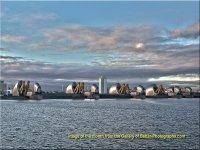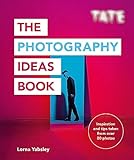Landscape Photographs
"Out in all Weathers"Original Article by Derek Forss
"Article first featured in Olympus User Magazine"
LANDSCAPE PHOTOGRAPHS ARE INEVITABLY one of the most popular subjects for all camera users. The photographer will always be attracted to a dramatic, colourful or serene vista that promises good results.
Further, the variations in any outdoor scene means that the landscape photographer has an almost infinite scope of interpretation. One of the main factors is the time of the year; a landscape is hugely influenced by the light quality and prevailing weather. Standing on a hillside in pouring rain hoping to capture the seven counties promised by the guidebook is fairly futile, but come back the next day and you may well succeed!
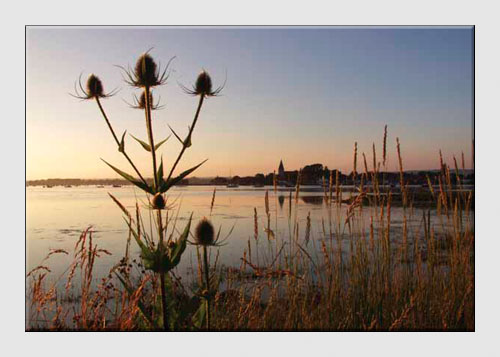
Taking control with Aperture Priority and employing hyperfocal distance ensures that both the foreground teasel and Bosham Church in the background are sharp. Timing was precise. We drove down from Surrey, had time to enjoy a meal first before positioning ourselves for the shoot. Knowing when the sun is going to set before you leave home may seem obvious – but it did help!
This may seem an obvious photographic scenario, but what is not widely appreciated is that landscapes can be just as successfully captured with an entry-level camera as one designed for professional use.
Equipment
When I teach photographers about the art of taking landscape photographs, I do not demonstrate using an SLR, but with a compact digital camera, the Olympus SP-350. Landscape photography requires a prior knowledge of apertures and shutter speeds and, importantly, a basic understanding of weather and light.
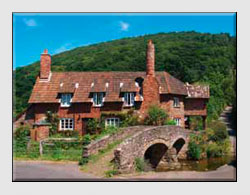
Strong colours are certainly important but shadows have to be minimal and in the right place. What the viewer cannot see are the other buildings, which at the wrong time will cast heavy shadows across the scene.
Landscape Photographs
For a modest outlay, the Olympus SP-350 includes features that you would normally expect to find on a camera costing twice as much. Program and Auto are fine for getting used to a new camera, and although Scene Select modes are a useful intermediate step, they do not teach the exponent photography as Shutter and Aperture Priority settings will. It also shoots in RAW.
Of the two, Aperture Priority is the most useful for landscape photographs as it controls depth of field, but Shutter Priority comes into its own with water. Whether a waterfall should be frozen or blurred is a matter for personal judgment, but Shutter Priority provides the photographer with a choice, something that Program or Auto cannot do.
The Four Thirds standard requires focal lengths of all E-System lenses to be shorter than their equivalent film lenses: a standard lens has a focal length of 25mm instead of 50mm, but with an extended depth of field normally associated with a wide-angle of the same focal length on a film camera. This is fantastic for landscapes, particularly as I like to feature foreground interest to create depth to my images.
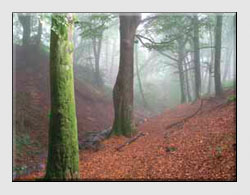 Dartmoor is not the best place for a photography holiday on a wet day, so our shoot was deferred. Walking through Haytor Vale later that day, the sun gradually illuminated the landscape in a way that would have been impossible to predict.
Landscape Photographs
Dartmoor is not the best place for a photography holiday on a wet day, so our shoot was deferred. Walking through Haytor Vale later that day, the sun gradually illuminated the landscape in a way that would have been impossible to predict.
Landscape Photographs
The SP-350 does not employ the Four Thirds standard. The sensor is smaller and requires an even shorter focal length zoom lens, extending depth-of-field even further.
While there might be an element of ‘point and shoot’ in the camera’s operation, this becomes a useful feature for images with a strong foreground that is required to be sharp, together with a distant view. The more astute photographer, who appreciates the value of Aperture Priority beyond achieving a correct exposure, will choose a small aperture to ensure that everything is guaranteed to be sharp – such as f8.
The weather
Even for the photographer with techniques oozing from their fingertips, a lack of appreciation of weather in its multifarious moods means that they do not understand landscape photography. It is this single factor that separates the expertise of photographers irrespective of camera and technique. The easiest way is to watch the BBC weather forecast and for digital viewers you can update this information every hour courtesy of News 24.
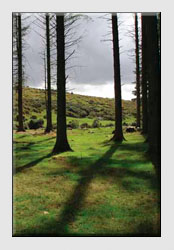
Shadows add patterns to a view of contrast. Spot-metering for highlights avoids overexposure but the tree trunks are rendered as silhouettes. This is not seen by the human eye; therefore it is a photographic effect that is perceived by the photographer who has developed the ‘photographic eye’.
Landscape Photographs
Good landscape photographs involve the right combination of photographer, subject and weather meeting at the right times. Sun, rain and snow are really quite variable – trust me, it’s very easy to get caught in the wrong sort.
Take the sun – here I recall the dry remark by one weather presenter at the start of a forecast by stating that “if it wasn’t for the cloud, it would be a lovely sunny day.” In photography this is not as stupid as it may sound, as cloud affects the quality of light in a multitude of ways. At its worst it brings rain; when it does, the art of catching the magic moment when it all breaks and the sun illuminates a landscape now awash with colours so radiant, has nothing to do with hotographic technique!
Much of our weather comes across the North Atlantic and having travelled 3,000 miles over the sea, a rain-bearing front contains a lot of water. Much of it is deposited on the west coast of Ireland, but it still reserves some for the UK.
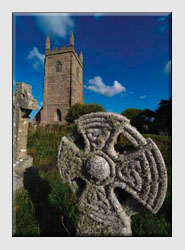 In landscape and architecture working with the specialised 7-14mm lens you need to choose your subject and in particular the perspective very carefully. I find it wonderful for church interiors.
Landscape Photographs
In landscape and architecture working with the specialised 7-14mm lens you need to choose your subject and in particular the perspective very carefully. I find it wonderful for church interiors.
Landscape Photographs
The hot and balmy summer’s day, nice as it sounds, does not always offer the best light – all too often it is hazy, impairing distant views. It’s far better to wait for an Atlantic weather front to turn the wind direction from a hot southerly into a fresher westerly. In winter, the angle of light is lower and rainbows become more common, particularly around 3pm after a rain
cloud, which is still giving you a soaking, clears the sun first – come on, it’s no use sheltering in the car – suffering for the sake of your art is the norm.
Poor light
So, what of the classic situation – you are on holiday and it rains all day! Is meaningful landscape photography now completely out of the question?
Much depends on planning and location. There are subjects that look better on wet or dull days: waterfalls are a prime example and close-ups too, particularly of a garden. These are happy instances of using a technique in the ‘right’ weather.
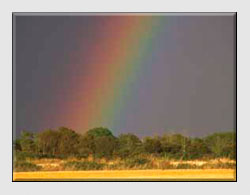
In summer, rainbows occur more after 5pm, particularly when accompanied by showers. In winter they appear at almost any daylight hour, but again you require the temporary inconvenience of a short, sharp shower.
Landscape Photographs
By their very nature waterfalls are often situated in deep, dark rocky clefts overhung by heavy trees, all of which cast unwanted shadows on a sunny day. With shutter priority, if your preference is to blur water with a long shutter speed, then a dull or even wet day is crucial. Without these conditions it becomes impossible for the camera to select an aperture small enough to prevent overexposure.
When working in poor light, the general trick is to exclude the sky from the composition to prevent it becoming the brightest part of the image. Try shielding the sky from the eyes with your hand and notice how colours in the immediate foreground spring into life, even on a dreary day. This is why many professional photographs of gardens, especially close-ups, are taken on a dull day, preventing deep and heavy shadows from ruining the image.
Timing
I do not believe that landscapes should only be taken before 10am and after 4pm. By working with the weather, any photographer should be capable of taking excellent pictures between these hours. It is quite likely this argument has much to do with the angle of light, but this phenomenon can be enjoyed for most of the time after we switch to GMT at the end of October.
If pushed to state a favourite time of year for shooting landscapes, then spring and autumn would easily come top, but not just for the abundance of colour. Working with an angle of light that is 45 degrees or less creates an atmosphere and modelling to a scene that you do not get at the height of summer, even before 10am.
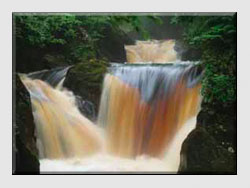 This rainy summer’s day was perfect for waterfalls; taken with a supported camera and 1/4 second exposure. The rain caused the extra colour in this scene: it’s peat washed down from the moors. This spontaneity is the essence of landscape photography.
Landscape Photographs
This rainy summer’s day was perfect for waterfalls; taken with a supported camera and 1/4 second exposure. The rain caused the extra colour in this scene: it’s peat washed down from the moors. This spontaneity is the essence of landscape photography.
Landscape Photographs
In spite of this seasonal preference, I would not put my camera away during June and July. Harsh light still has its place in landscape photography, particularly for contre-jour and chocolate box’ - style shots. These are not, as is sometimes perceived, the easiest of interpretations to capture.
Controlling shadow is essential for a composition featuring strong hues, particularly their location. Many views presented as ‘chocolate box’ are unintentionally ruined by a heavy shadow in the wrong place and, while they are essential to provide a degree of modelling, their presence must be reduced to a minimum by selective viewpoint – a case of art concealing art?
Weather is ultimately the controlling force in landscape photography. You can’t change weather, but you can work with it by selecting the most appropriate subject for prevailing conditions.
Using Aperture Priority can result in amazing depth-of-field compositions that are almost impossible with a film camera and water and movement can be controlled by a shutter-speed courtesy of Shutter Priority.
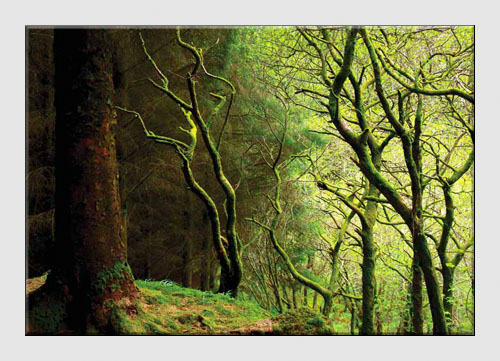
An example of working with weather, an ideal subject for a cloudy day. By removing the sky the woodland patterns become the brightest part of the scene. The weather has created the subtle hues, but in strong sunlight contrast would create a problem.
But weather is the final judge, an uncontrollable factor that decides what you take, how and when. Outlay for a camera – £100 or £1,000 – is largely dependent on output and the photographer’s
aspirations, but speaking as a tutor, it is satisfying to realise and to demonstrate that good landscape photographs are achievable with a camera that is within the financial reach of the majority.
toptips
1 Work with weather – whatever it does, you follow! Listen to the forecast as frequently as possible. It is the weather and not the presenter who amends the plot by lunchtime.
2 In poor light, find a composition that excludes the sky.
3 Where possible, avoid predominant blues and greens; bring in warm colours to the composition.
4 Use Aperture Priority and a small aperture to create a sharp, strong foreground to give depth.
5 Be selective when shooting from a hilltop. Avoid trying to include too much with a wide-angle– a telephoto will emphasise patterns and textures, adding impact.
6 On a wet day, go closer to your subject – try waterfalls, close-ups of plants or steam engines. It is amazing how romantic they look in rain.
7 Research your landscapes with maps and guidebooks – even though the subject is static doesn’t mean it is easier to shoot.
8 In the rain, protect your camera and yourself with suitable apparel. Wear strong walking boots if venturing away from tarmac. If it is not too windy an umbrella can make dramatic shots more practical.
9 Above all, be yourself! This art form requires an input beyond photographic technique. Take on board only what appeals to you with this article and adapt it. I am not a believer in tripods, filters and Photoshop, and that confession raises a few hackles!
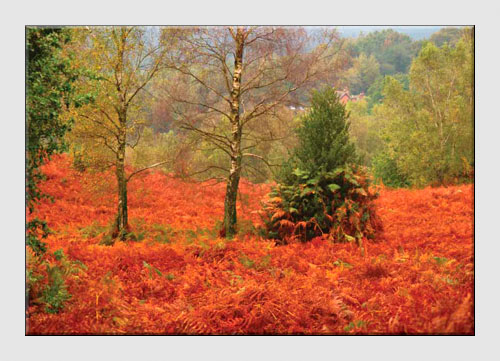
Shove in warm tones – lots of it – and it is striking how plenty of colour is magically added on a dull day – but remember to remove the sky!
© Olympus UK
Click here for more Tutorial Articles by OM Systems
(formerly Olympus Cameras).
More information about Depth of Field can be found in the Focus section.
Don't miss our tutorial on Seasonal Landscape by Derek Forss and our masterclass on Reflections on Landscape Photography by the world renowned master Charlie Waite.
Return from Landscape Photographs to the Photography Tutor page.

